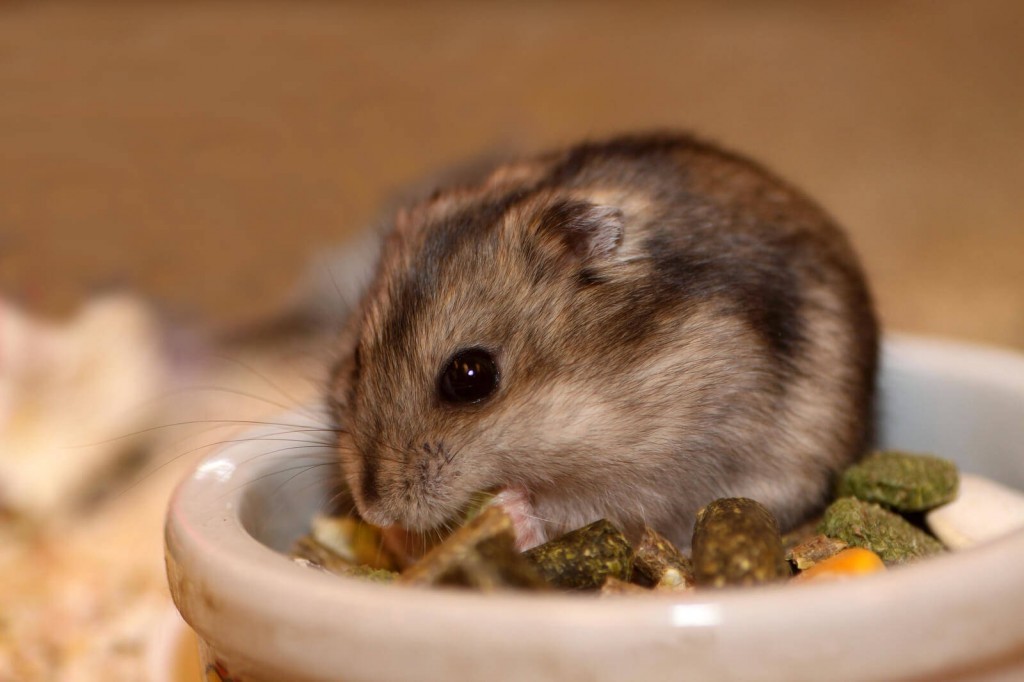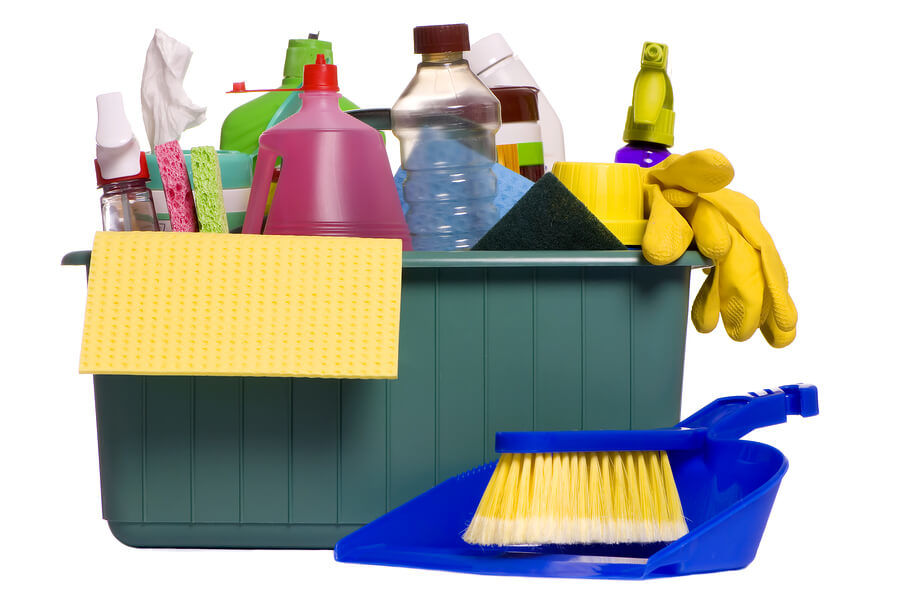Daily Care
Every day you need to check your cage and refill the food dish and water bottle. You don’t have to remove any hoarded food that your hamsters have taken out of their dish but you do need to remove any uneaten fresh food that has been in the cage for more than a few hours. See what types of foods we are referring to. Other than these simple chores, no other maintenance will needed to be done as frequently. It’s important to note that you should do all your cleaning during the evening hours when your pets are awake since it’s stressful on them when you wake them during their sleeping hours.
Recommended Products

Weekly Chores

Once a week you need to tidy up your cage. If you have a colony of dwarf breeds you may need to do this more frequently. While performing this weekly maintenance, you should remove your hamsters and place them into a temporary container. Place some of the bedding from the main cage into this temporary space to keep things familiar and low stress. If you don’t have a spare cage, you can use a tall bucket or a bathtub with a closing door and a shut drain. You can even put it in its hamster ball but only if you place the ball it in a safe hamster proof room and you don’t take a long time to perform your routine maintenance.
It shouldn’t take long to carry out this weekly chore however. In addition to to the daily upkeep explained above, you will need to take the time to remove and replace any soiled bedding in the area where your hamsters use as a bathroom. Often, your hamsters will choose one corner of their habitat to use as a bathroom. If you trained your hamster to use a litter box, this will need to be scooped to remove any clumps of waste. Next, scrub your water bottles with a bottle brush to keep algae from forming. Finally, the only other task that needs to be done is to wipe up any visible mishaps or messes throughout their living space.
Monthly Upkeep
Every month or so you will need to thoroughly clean your entire habitat. This includes all the accessories and the tubes and tunnels. Again start by removing your hamsters from their cages and placing them into their temporary container. Next remove all the accessories, food dishes and water bottles. Wash these with a mild soapy mixture or with just hot water if they are not visibly dirty. Ceramic and plastic accessories should only be cleaned with hot water though. After you rinse and dry these pieces, you can remove all the bedding. Save some of the cleaner of the old bedding to be used with the new hamster bedding.

Remove the bottom tray or if there is none, the bottom sections with soapy water and a scrub brush; do the bars or the sides of the habitat as well. Vinegar and water is an alternative to soap if you are concerned about leaving any unhealthy residues behind. Next, take apart your hamster tubes and tunnels and scrub them out with a bottle brush; do the same with your water bottles at this time. Once all these have been cleaned, rinsed and dried, you can go about putting them back together. This is a good time to change up the layout a bit to keep your hamster curious about their surroundings. By using some of the old bedding mixed in with new bedding, you will help ensure your hamsters still recognize their living space even if you change up the layout just a bit.
Sanitizing Due to a Sick Hamster

When your hamster is sick from a virus, fungus or bacterial infection, you not only need to isolate and treat it for its hamster illness, but you will also need to disinfect its living space and accessories. This disinfection should be done carefully. Some of the the illnesses a hamster can get can also be spread to humans or other pets. Always wear gloves during this time and thoroughly wash your hands afterwards.
Wash the habitat just like you would during a normal cleaning but instead use a very mild bleach solution of 1/4 cup of bleach to 2 1/4 cups water. When you perform the rinsing process, do it several times to make certain there is no bleach left on the surfaces. If you don’t do a proper job of rinsing, the toxic odors (gasses) from the remaining bleach can engulf the habitat creating an unhealthy living environment for any hamster living in it. If you can still smell the scent of bleach, keep rinsing.
Reviewed By: Tim Winter

Tim Winter has a strong affection for pets and wildlife. His years of experience caring for various types of pets has led him to share his knowledge with others on the best practices in pet care. Tim holds a Bachelor of Science from the University of Oregon School of Journalism and Communications.

Everyday I clean my Syrian hammys den, it’s a small enclosure so I feel I need to keep it sanitary. I use Natures Miracle Cage Cleaner.then I replace the bedding and toss out the food and poop. Hamsters eat their own poop this is to reasimalate the vitamins. But tonite my Bella will not come out of her den. I’m worried she is sick. Her coat and tail look fine. She will come out with coaching and a treat. HELP!
Try to clean the cage less, ounce every 2 weeks to a month. Also try getting a cage with at least 450 square inches of floor space. Finally, hamster are nocturnal so check at night.
I have just took the care of a hamster I do not know nothing about careing for them what do I use for bedding should I use newspaper
When cleaning out a hamster’s cage, when you’ve finished and are putting the bedding back in do you line it with newspaper ot plastic bags?
I would use either a store bought liner or paper material that doesn’t have any inks or dyes. plastic might be a ad choice too since if the hamsters do manage to get a hold of it, they can choke on the plastic bits or get it stuck in their intestines.
hey that was on my bday lol